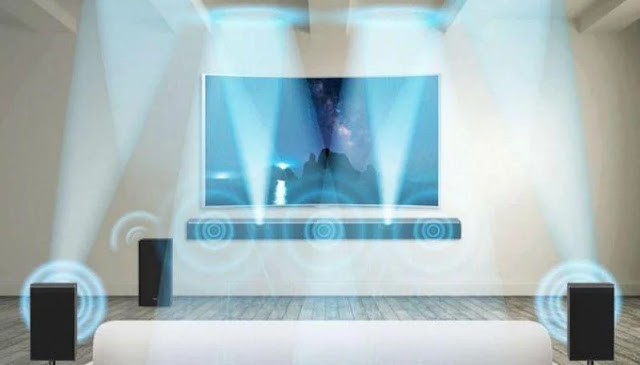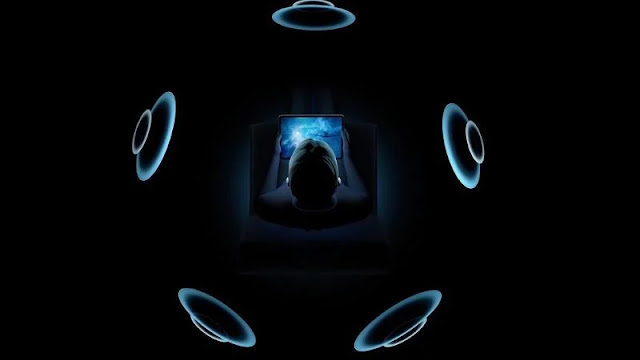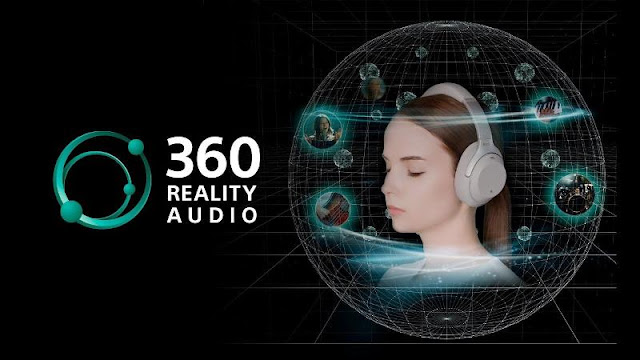Apple Spatial Audio, Dolby Atmos, Sony 360 Reality Audio and other codecs are taking over - but what are the key differences and what hardware do you need to enjoy it? We explain all you need to know.
Immersive sound formats once exclusive to the world of cinema have crept into our everyday lives, with both music and movie streaming services now offering compatibility with an array of spatial audio formats. The most recent addition is Apple Spatial Audio, joining an already busy market of 3D audio codecs including Dolby Atmos, DTS:X and Sony 360 Reality Audio, with each offering a unique spin on the immersive audio experience.
As with most things audio-related, it’s not quite as straightforward as you might like – you’ve got not only the codec to consider, but whether you’ve got compatible hardware and access to content with the correct subscription. It might sound daunting, but we break down everything you need to know about spatial audio in its various forms in our immersive sound guide right here.
What is spatial audio?
Spatial audio is a rather broad term used to describe a suite of audio technologies that aim to deliver a more immersive sound than standard stereo playback (left and right channels), with the aim of making sound feel like it’s coming at you from everywhere when playing games, watching movies and, more recently, listening to music.
Stereo and even surround sound deliver a horizontal experience, with sound coming from the left and right independently. Spatial audio, in its various forms, will deliver the horizontal soundscape while also making sound appear as if it’s coming from above too.
It’s particularly popular in movies and games, offering a more immersive audio experience where you can hear sounds like the roar of a jet engine above your head just like it would in real life.
When it comes to music playback, spatial audio gives you a more ‘spacious’ listening experience. Depending on the format you go for, you’ll hear instruments coming from all around you in a virtual sphere, providing an experience more akin to a live music performance.
It’s not as straightforward as that though, with different spatial audio formats offering a slightly different interpretation of an immersive audio experience, and availability can vary too.
What different spatial audio standards are there?
If you thought there was just a single standard of spatial audio, you’d be wrong – in fact, it’s an ever-growing list.
Dolby Atmos
Out of all the spatial audio codecs, Dolby Atmos is the most well-known. Starting out in the world of cinema before making its way into the home for both movies and music playback, Dolby Atmos provides what we’d describe as the classic spatial audio experience.
Dolby Atmos provides a more immersive soundscape than standard surround sound formats, with musicians and sound engineers purposely placing elements from a track in a virtual sphere. It allows creators to produce soundtracks, sound effects and music that sound like they’re coming at you from above and below, as well as from all sides.
Even if you don’t have the up-firing speakers, the Dolby Height Virtualization technology can simulate the effect of sound coming from above – although it’s not quite as good as the real thing.
While Dolby Atmos has been focused mainly on games and movies being played on Atmos-compatible AV systems, the format is also available for music playback via headphones. Like with sound effects in a movie, the instruments and effects in songs will come from all around you.
Apple Music, in particular, makes use of Dolby Atmos in an interesting way – but more on that in a bit.
DTS:X
DTS:X is another object-based audio codec you might recognise, offering multi-dimensional sound to provide sound that the company claims “moves around you like it would in real life”.
It took the opposite route to Dolby in that it first targeted home surround systems before making the jump to cinema, which might help explain the biggest key difference between DTS:X and Dolby Atmos.
While Atmos requires extra overhead channels (those up-firing tweeters we mentioned earlier), DTS:X works with standard 5.1 and 7.1 surround sound systems all the way up to 11.2-channel systems.
Another key benefit of DTS:X is the ability to adjust the volume of different sound channels, allowing you to crank up the dialogue channel during noticeably hushed chats.
While DTS:X is specifically designed for surround sound systems, you can also find DTS Headphone:X which aims to create the same effect using PC software, though it’s still tailored to games and movies rather than music playback. In that respect, Dolby Atmos has the upper hand.
Apple Spatial Audio
Apple Spatial Audio is designed to take Dolby Atmos content and elevate it to the next level – though you’ll need specific hardware, namely a pair of AirPods Pro or AirPods Max and a recent iPhone or iPad running iOS 14 or later, to take advantage of Apple’s twist on immersive content.
Apple wants to add yet another level of immersion to the spatial audio experience by utilising the built-in gyroscopes and accelerometers within Apple’s high-end headphones to track the position of your head and iPhone in real-time.
That allows you to move your head and hear sound from different directions while keeping the audio locked into its original place, providing an experience not dissimilar to that of watching a movie in a cinema.
While Apple Spatial Audio was focused on video content initially, Apple expanded spatial audio to Apple Music in June 2021, releasing an ever-growing library of Dolby Atmos-encoded tracks at no extra cost to subscribers with a similarly immersive effect.
Support isn’t limited to Dolby Atmos content either – despite Apple taking advantage of Dolby Atmos in Apple Music, it’s available for 5.1 and 7.1 content too.
Sony 360 Reality Audio
Sony’s 360 Reality Audio is another codec focused on object-based audio output, offering a similar virtual experience to Dolby Atmos and co. tailored to music output – for now, anyway.
More specifically, Sony designed the format using the MPEG-H 3D Audio standard that has been optimised for music streaming, making it the ideal option for music streaming services.
And unlike most other codecs, you don’t need any fancy hardware to take advantage of it, with Sony claiming it’ll work with any pair of headphones. However, some pairs like the WF-1000XM4 get an optimised experience by analysing your ears via photos.
Speakers and surround sound systems are a different story though; it’ll need Sony’s custom decoder built-in to handle 360 Reality Audio content - more details on this below.
While there isn’t as much Sony 360 Reality Audio content compared to the likes of Dolby Atmos right now, there is a growing pool of supported content. It's also available via Tidal, Amazon Music HD and Nugs.net - see below for more details.
Do I need specific equipment to experience spatial audio?
Simply put, the equipment you need for spatial audio playback depends on the spatial audio codec you’re using.
First things first, you’ll need to make sure that the format you want to listen to is compatible with your smartphone, media streamer or TV – even if your soundbar or headphones are Atmos-compatible, for example, you’ll need your device to decode the codec first. If it can’t do that, you’ll likely get regular stereo or surround sound playback.
Once you’ve got that figured out - you're best off checking your device specs - it’s time to move on to hardware compatibility.
Sony’s 360 Reality Audio is among the best of the bunch in terms of hardware compatibility, offering an immersive experience on most headphones and earbuds – though the same can't be said with speakers, with only the Amazon Echo Studio and specific models of Sony speaker currently able to handle the format.
On the headphone front, you just need to make sure that your smartphone and content offers support for the codec, something that a growing number of Android manufacturers and streaming services are doing.
DTS:X is a little more relaxed than Dolby Atmos, which DTS describes as a flexible codec that works with “any speaker configuration within a hemispherical layout”. It’s tailored more toward surround sound systems with standard 5.1 and 7.1 system compatibility, with no focus on streaming audio content like Sony or Dolby. The closest it gets to headphone support is an app for PC, but even that is designed for gaming and movies rather than music.
Apple Spatial Audio is arguably the most complex of the bunch when it comes to hardware and software requirements. To experience full spatial audio with head tracking, you’ll need a pair of headphones with either Apple’s W1 or H1 chipset, which includes second-gen AirPods, AirPods Pro, AirPods Max and some Beats by Dre headphones too.
Which streaming services support spatial audio?
Netflix
Netflix, one of the biggest video streaming services, has a range of Dolby Atmos titles, but it’s not available on every single TV show and movie. To make things simpler, Netflix has included a handy Dolby Atmos logo in the description of all supported titles.
To access Atmos content you’ll need the Ultra HD subscription, a compatible TV, streamer or smartphone and an Atmos-enabled speaker system too. While Netflix initially didn't support Apple Spatial Audio, the company has since begun rolling out support, although it has admitted that it's a slow rollout and not everyone will be able to take advantage right away.
Amazon Prime Video
Amazon Prime Video is hot on the heels of Netflix when it comes to Dolby Atmos content. The downside is that the library isn’t quite as vast as that of its competitor, and it’s even more limited in the devices that support streaming Dolby Atmos content.
At the time of writing it’s limited to Amazon Fire TV and Fire TV Sticks along with the Apple TV 4K, some smart 4K TVs and recent Xbox consoles. Like Netflix, Amazon is yet to offer support for Apple’s Spatial Audio tech.
Apple TV+
Unsurprisingly, the Apple TV+ video streaming service has a range of Dolby Atmos titles available to stream, and it fully supports Apple Spatial Audio too. The usual limitations apply – you need an iPhone or iPad and compatible headphones – but it’s one of few video streaming apps that fully support the tech right now.
Apple Music
Apple Music has jumped on the spatial audio trend, utilising Apple Spatial Audio and Dolby Atmos mixes of popular tracks to provide an immersive listening experience that’ll change as you move your head. The library is already impressively large, with Apple focusing on adding more over time, and it doesn’t charge any extra for the pleasure either.
It’s currently the only music streaming service to support Apple Spatial Audio, although it’s exclusive to iOS subscribers – while Android subscribers will be able to listen to songs mixed in the Dolby Atmos format, it won’t react as you move.
Deezer was among the first music streaming services to jump on the spatial audio bandwagon, introducing the tech to top-tier subscribers back in June 2020. There is a dedicated 360 app for it and you'll need the HiFi subscription plan, too.
It didn’t stop there though; in response to spatial audio support in Apple Music, the company announced Deezer 360 Sessions. This is a collection of 28 live-recorded tracks mixed in Sony’s 360 Reality Audio that offers an immersive concert-going experience. It’s a relatively small collection, but it’ll likely grow over time.
Tidal
Not keen to be left in the dust, Tidal also provides a spatial audio streaming tier – although it’ll set you back £19.99/$19.99 per month to subscribe to the Tidal HiFi tier. As with most streaming services, the spatial audio comes in the form of both Dolby Atmos and Sony 360 Reality Audio, with a growing collection available to stream on compatible hardware.
While you originally had to pay an extra £5/$5 a month to upgrade to Amazon Music Ultra to access its lossless and Dolby Atmos-mixed library of music, the company ditched the paid upgrade on the same day Apple Music introduced the tech at no additional cost to subscribers.
There’s an ever-expanding library of Atmos-mixed tracks available on Amazon Music Unlimited, available to stream on any compatible device.










0 comments:
Post a Comment